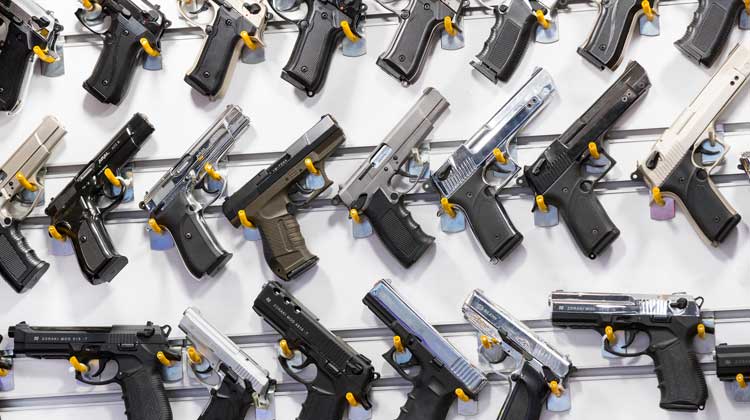
In a prelude to the March for Our Lives gun-control protests, a Heritage Foundation analysis March 19, among other things, stated that stricter gun laws don’t stop school shootings. In Focusing on Safety After Parkland authors John G. Malcolm and Amy Swearer examined school shooting data and offered a number of recommendations on the path forward to avoid such shootings in the future.
Among their primary recommendations were increasing the number of armed officers at school to lower the response time in case of an active threat, as well as modifying school infrastructures to “better protect students from active threats without creating a prison-like environment.” In addition, the authors encouraged better allocation of resources to train school medical professionals and “coordinate school and community mental health services.”
They also recommended the consideration “red flag” laws to allow law enforcement to even “remove firearms from individuals who pose a risk of imminent harm to self or others while still respecting due process and the fundamental importance of the Second Amendment right.” Authors also recommended exploring cultural factors that contribute to violence.
The report extensively examined the debate surrounding the issue of gun violence in schools as well. One of the biggest misconceptions, the authors said, is that “school shooting” itself lacks a singular definition. As an example, the report notes that gun-control advocacy group Everytown for Gun Safety has stated throughout the media that there were 18 school shootings in the first six weeks of 2018.
“What many people fail to realize, though, is that Everytown uses an extremely broad definition of the term ‘school shooting’ and includes all incidents in which ‘a firearm was discharged inside a school building or on school or campus grounds,’” the report said. “Everytown counts accidental discharges, suicides, incidents that did not result in injury, and shootings that took place outside of school hours involving persons unaffiliated with the school.”
One example cited in the report included a 31-year-old man who shot himself in an elementary school parking lot—an incident Everytown cited as a school shooting. Other data cited in the report is that of the National Center for Education Statistics (NCES), which tracks school homicides—although it doesn’t break statistics down between firearm-related and non-firearm related incidents.
The report goes on to say that while Columbine-style shootings are nothing but devastating, they’re also quite rare. “Out of the more than 55 million K-12 students across the nation’s public and private schools, an average of 10 students are killed every year by gunfire at school,” the report said. “To put this number [in] perspective, over 800 students die every year during regular travel to and from school.”
Malcolm and Swearer also point to an apparent uptick in school shootings recently, but said it was worse in the mid-1990s.
“Since 2013, and including the Parkland shooting, there have been five multiple-fatality shootings at K-12 schools, resulting in 27 deaths,” the report said. “But between 1995 and 1999, the height of the Federal Assault Weapons Ban, there were seven multiple-fatality shootings resulting in 33 deaths.”
The authors also said student shooting incidents have declined steadily for 30 years, with “firearm possession incidents” at schools numbering three out of every 100,000 students. And NCES data said “there was approximately one student homicide or suicide for every 2.8 million enrolled students,” the report said.
“Meanwhile, an average of 50 children ages 7 to 18 are murdered by their parents every year,” the authors added. “In other words, school-age children are roughly five times more likely to be killed by their own parents than they are to suffer a violent death while at school.”
Read the entire report here.
© 2018 Homeland411